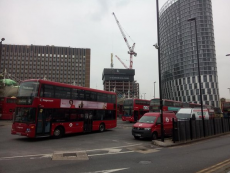
Email: emanuelealbertocirello.98@gmail.com
Total Article : 76
About Me:I am a Year 13 student which aspires to be an architect. I am interested in anything I don't yet know, and I mostly write about art, politics , Italian culture and inspirational people, although I will try to write for as many categories possible, just to test myself and get to know more things.

Every rebranding process requires rebranding players in order to take place and be successful. The rebranding players are the stakeholders in the rebranding process, and so include the group of different people, authorities and both private and public organisations which are directly involved in the rebranding process.
The number of players involved depends on the importance and relevance of the rebranding process itself. This means that for different types of regenerations there will be different types of stakeholders being involved in the process.
In Cornwall, for example, the rural rebranding process consisted in the creation of the construction of the Eden project. This type of flagship project has seen the involvement of many different people. Firstly the local people involved were the stakeholders emotionally attached to the programme whereas the very important key players varied. The construction companies and the workers, the planners and the architects involved were the players who actually made the Eden Project reality are an important part in the rebranding process. Public institutions such as the Local Consultative Committees and the local council have been important players in the regeneration as they have allowed the Eden Project to be build, giving permissions to the construction agencies.
For rebranding programmes which involve urban areas, but not on a very large scale, such as the London Docklands regeneration, the usual stakeholders such as the construction companies, the local councils of Newham, Southwark and Tower Hamlets were involved as well as many other private rebranding players. In this case, the private stakeholders where the private companies such as HSBC and Lloyd’s Bank which have provided funds in order to offer jobs at their companies for local people.
In this case of regeneration even more governmental groups were however involved. As the scale and the need for regeneration were significant, groups such as the London Docklands Development Corporation and the Transport for London offered help during the rebranding schemes by making sure that the investments of private investors where well spent (LDDC) and that transport links would make the area even more popular and successful after the regeneration (TfL).
In rebranding processes involving the making of flagship projects, a wider range of rebranding players will affect the rebranding of the urban area. The regeneration of Birmingham focused on the concentration of various flagship projects which involved many different rebranding players. The flagship projects, such as the National Exhibition Centre and the International Conversion Centre have drawn the attention of the Millennium Commission Investors which gave the economic means to produce the rebranding and the Birmingham City Council which provided paper work for the regeneration of the city.
Lastly, in rebranding processes which are driven by a catalyst, the rebranding players are not only the common local authorities and workers, but many private companies invest in such programmes. London Olympics was a rebranding based on sports so investors, or official partners, such as Adidas, BT, Coca-Cola and Samsung have provided funding for the advertising the regeneration of the area attracting a greater number of visitors and resulting in the success of the regeneration. A similar pattern is seen also in the rebranding of Detroit, which was driven by the music and media culture of the city, so local mass media were the key rebranding players as they advertised the success of the regeneration on television, radio blogs in order to attract the attention of local people, which are the stakeholders which made the rebranding process reality through their collaboration, be it shown by working for construction companies or by paying taxes and getting involved in the changes.
Image credits:https://twitter.com/fsclondon/status/712588073217998852

0 Comment:
Be the first one to comment on this article.